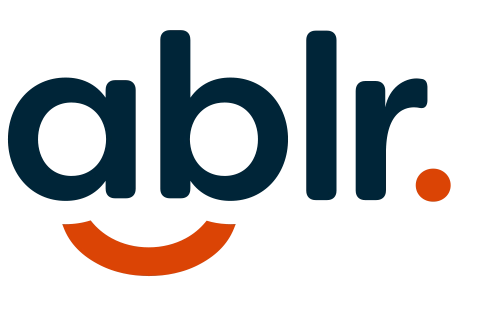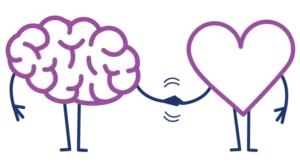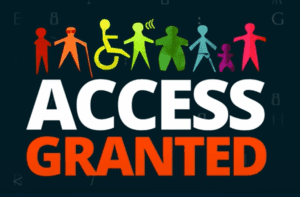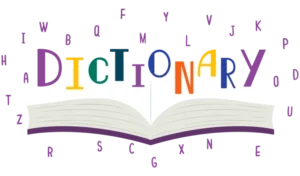by John Samuel
In my early twenties, partaking in the previously restricted nightlife scene was a high priority for me and my friends. A whole new world had opened up and it was exciting to explore. However, this also coincided with my vision loss.
Retinitis Pigmentosa, the eye condition I was diagnosed with when I was nineteen, often rears its ugly head by causing people to lose their night vision first – and I was no exception. Therefore, in the early days of my diagnosis, I really felt the impact when I went out in the evenings.
As the sun would go down, my stress level would go up. Although I desperately wanted to go out and enjoy the evening with my friends, I was scared about having to get in my car and drive in the dark. I was like a reverse vampire – I was out during the day, but once the sunset, I would retreat home.
Even when I was able to figure out transportation, I faced several other barriers that hindered me from really enjoying the social culture that took place at night.
There was a high probability that my friends and I would have an issue with a bouncer, security, wait staff, restaurant/bar management, or a patron, because of something related to my sight. It was embarrassing, and if I didn’t enjoy the company of my friends as much as I do, I probably wouldn’t have gone out. Too often, establishments would think I was too drunk, when they saw me stumble, or bump in to someone, and as I pleaded to them that, the reason this happened was that I could not see, it would eventually be resolved, but it left a damper on my evening.
Despite these challenges, I continued to go out, no matter the city I was living at the time, including Bangalore, New York, Douala, Kampala, Washington, D.C., and back in my hometown of Raleigh. In order to achieve my personal goals, it was essential that I participate in nighttime social and professional engagements.
It was only after I moved back to North Carolina, and joined LCI, when I started to use a white cane. For many, the realization of adopting a white cane takes a long time, and that was the case for me. Although it is a valuable tool for people with visual impairments, it is a sign that you no longer can rely on your body alone to get around, but you are also now telling the world that you are a person with a disability – it is mentally challenging, and is a very personal decision that needs to be made.
Several of the challenges that I faced in my twenties were now removed when a bouncer or host saw me come in using a white cane, but I often faced the same challenges when I walked up to a bar. The challenge that I face is that I cannot make eye contact with the person behind the bar. When people meet me, one of the things that is often said is that they cannot believe I cannot see them because it looks like I am making eye contact. This is great when I am speaking to people, but not great when I am trying to order a drink!
In the spring of 2019, I was attending an International Downtown Association event in Raleigh, and they were hosting a networking happy hour at the hotel bar where the event was taking place. I found my way to the bar and ordered a drink. It was convenient for me to anchor myself there and not to walk around in fear that I might bump into someone. People were bound to come to the bar to get a drink and this was an opportunity for me to start a conversation! That strategy worked out, and I struck up a conversation with a gentleman named Jim Peters, who ran an organization called the Responsible Hospitality Institute. He shared some amazing stories about how he was advocating for accessibility in the hospitality business in the 80’s, before the ADA (Americans with Disabilities Act) was passed into law. While we were chatting, I ordered another drink and the bartender placed my drink on the bar and walked away. I started to swipe my hand around the bar to find where she had placed the drink, but Jim kindly brought the drink towards my hand. He then called the bartender back, and took this opportunity to coach her on how to serve a customer who was blind.
I’m confident that the next time that a customer who is blind or has another disability comes to that bar, that bartender will be more empathetic and be more attuned to their needs. It’s the small things, like accessibility coaching or having an accessible website, that make a huge improvement in customer experience.
Later this week, I will be bringing my voice to the RHI 2020 SOCIABLE CITY LEADERSHIP Summit, the premier event for nighttime economies, which Jim has graciously invited me too. I will be on a panel called Inclusivity, Equity and Equality in Nightlife: How can attitudinal barriers be removed to create greater social experiences as physical barriers are minimized for people with visual and physical challenges. I will be joined on the panel with Greg Deshields, Executive Director, PHL Diversity. I will share my personal experiences to facilitate active discussions around developing processes that participants can take back to their communities to see new ways of enabling expanded social opportunities.
I am glad that organizations and city planners that are concerned with the economic development of downtowns and nightlife economies are now seeing that people with disabilities are an untapped market. Aside from doing the right thing, they are seeing the return on investment for improving the experience for customers like myself.





